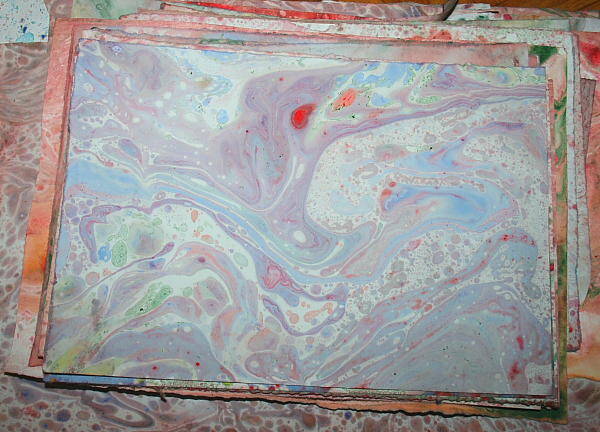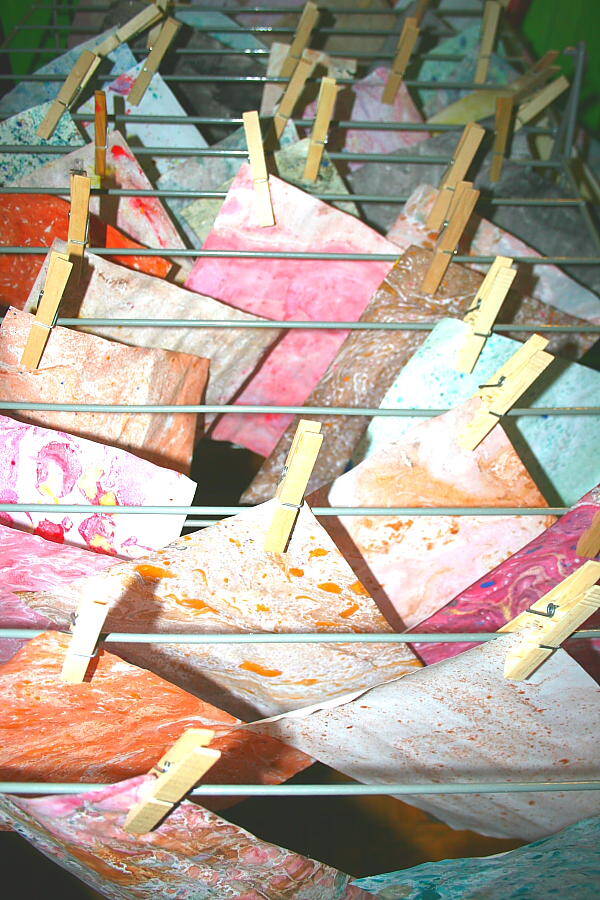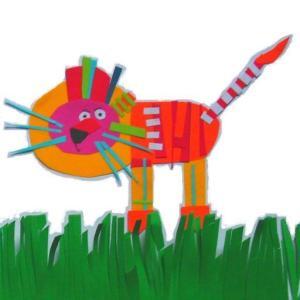MARBLED PAPER tutorial to achieve it easily with the children. It is a classic manual activity, simple and highly effective.
The paper obtained lends itself to various uses, mainly because besides the great decorative impact, this paper assumes the robustness of greaseproof paper.
Is particularly interesting, with even small children, play to interpret stains.
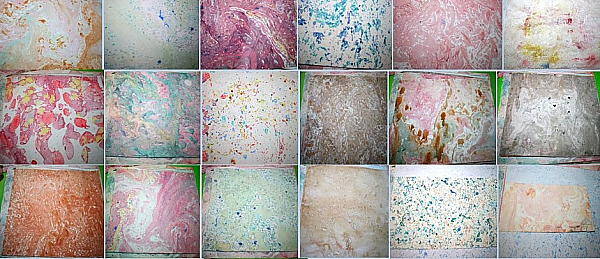
With the older children we can speak of specific gravity to explain how you create the marbled effect on the paper: the oil is lighter than water, and the color is also soluble in turpentine and oil seeds , is insoluble in water.

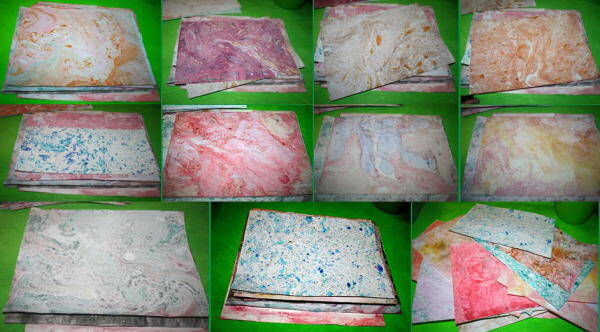
After scoring the first sheet, opens the experimentation: it is very interesting to see how the different colors are combined with each other, and how, to a certain extent, it is possible to dominate the randomness with which the spots are printed on paper, or by creating some floating palette before placing the sheet, either by moving the spots, creating swirls, zig zag, etc…
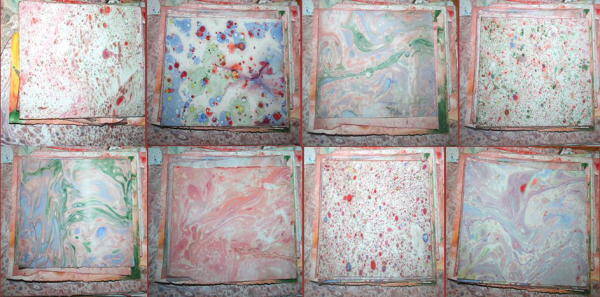
MARBLED PAPER tutorial – ATERIALS REQUIRED
oil colors
turpentine
possibly seed oil
glass containers or lids of jars
brushes or cotton sticks
a tray with water
sheets of paper, of various types (we can use printer paper, for watercolor, drawing paper, etc … depending on the quality of the paper, the final effect may vary).
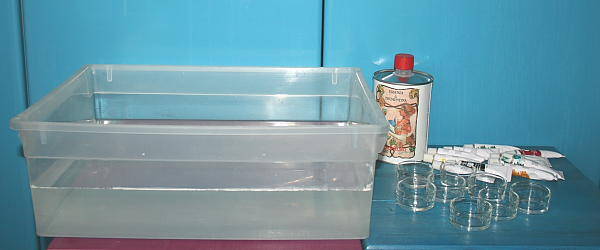
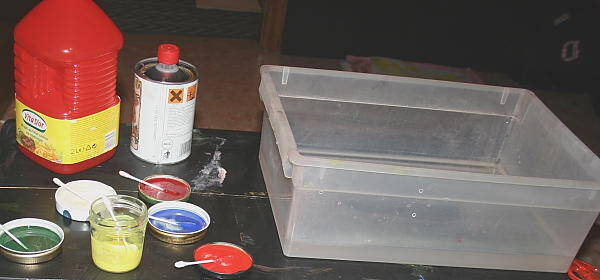
MARBLED PAPER tutorial – HOW TO DO
First prepare the colors, diluting with turpentine. You can experiment with different types of dilution depending on the effect you want. You can also try adding to the colors, as well as the essence of turpentine, even seed oil.
Then we set up the table in such a way that the child is autonomous in taking the colors that he prefers and, when he wishes, the sheets of paper. For younger children it is best not to use too large sheets (for example, I divided in half sheets A4):
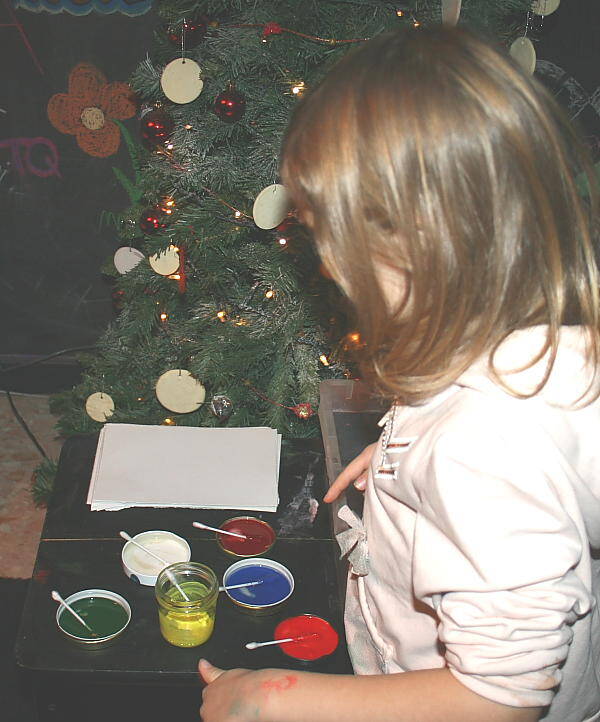
Using cotton sticks, the child begins to squirt the spots of color on the water:
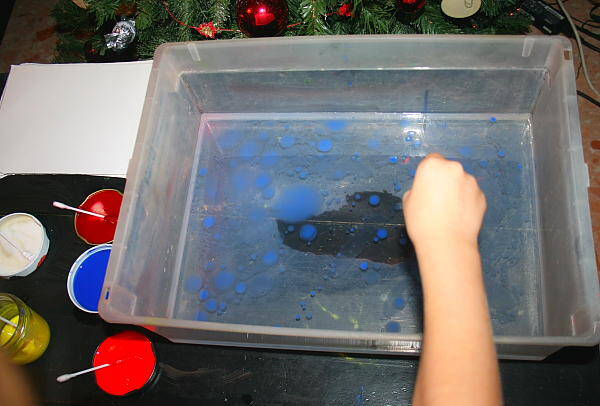
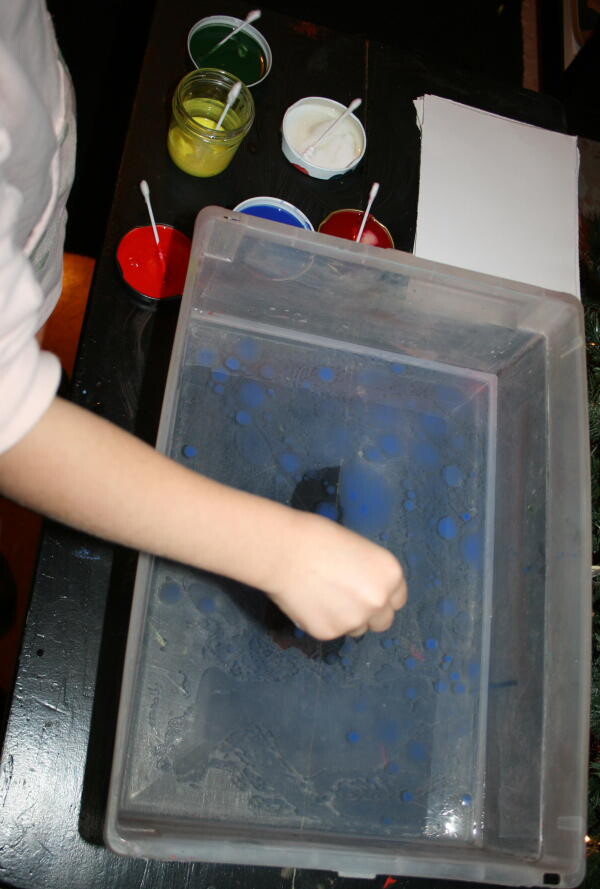
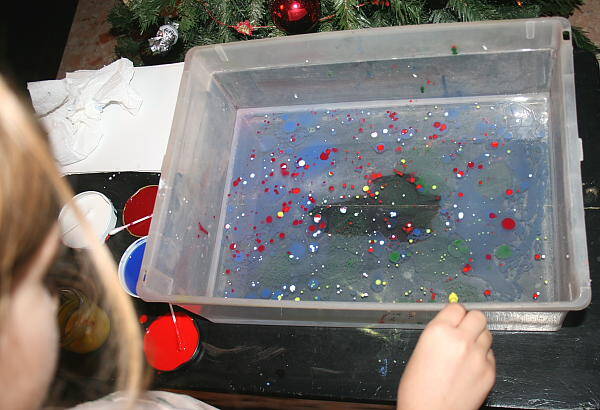
When he wishes, he puts the sheet of paper on the surface of the water:
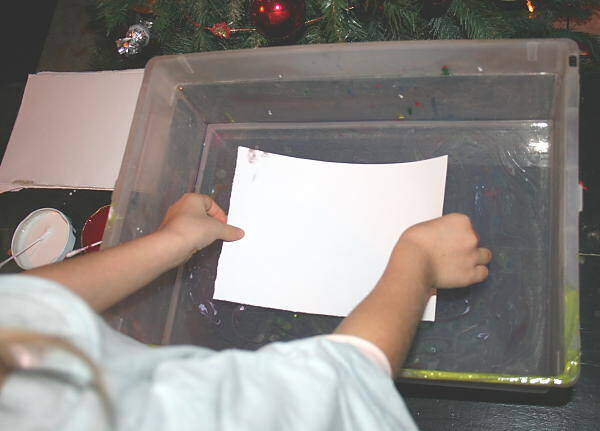
and when the paper is wet, he takes it out:
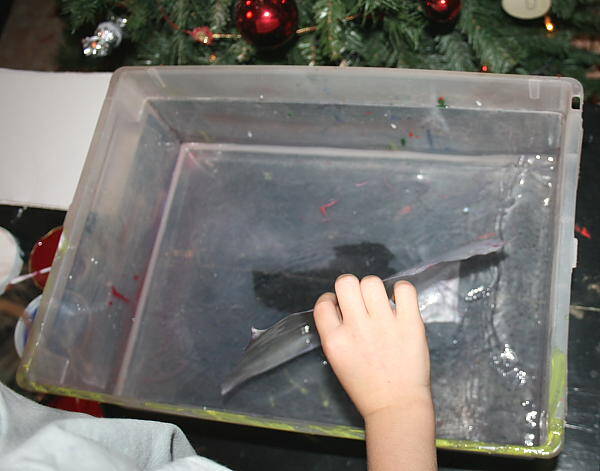
The sheet will have captured all of the spots:
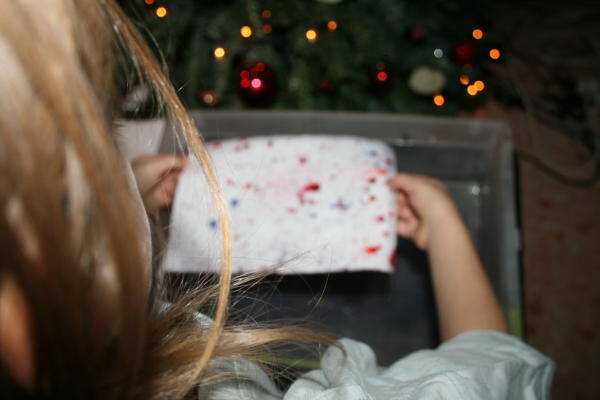
And it is ready to be hung out to dry:
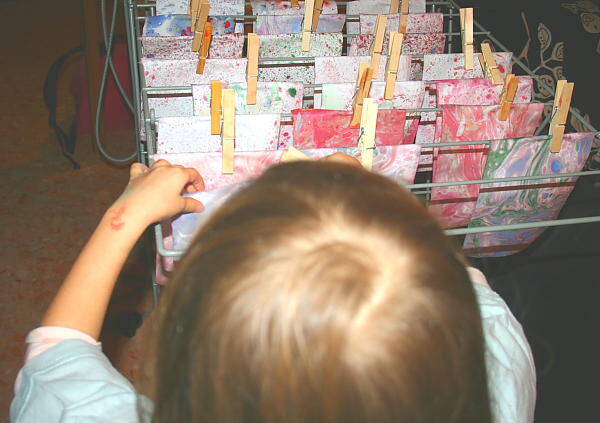
This is the result, when dry:
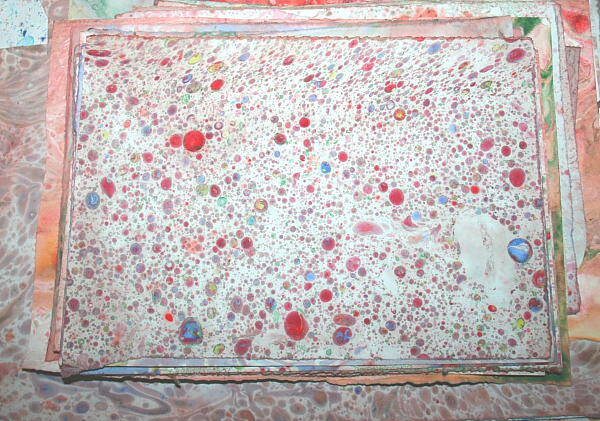
After several experiences, you can play in creating different effects:
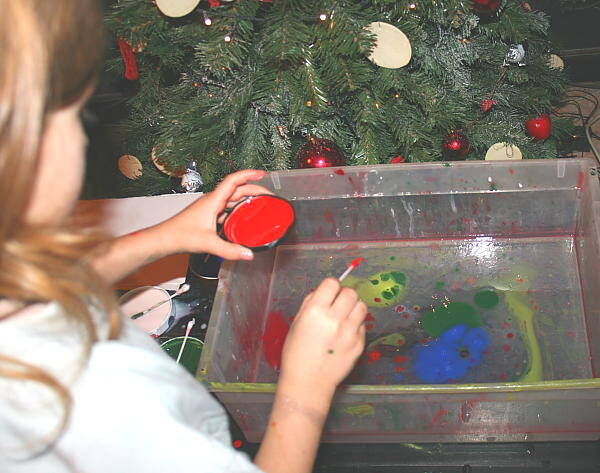
After the color splashed in the water, the child may try to move the color with a cotton swab:
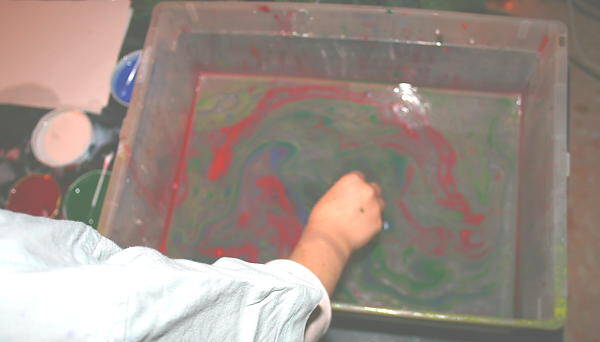
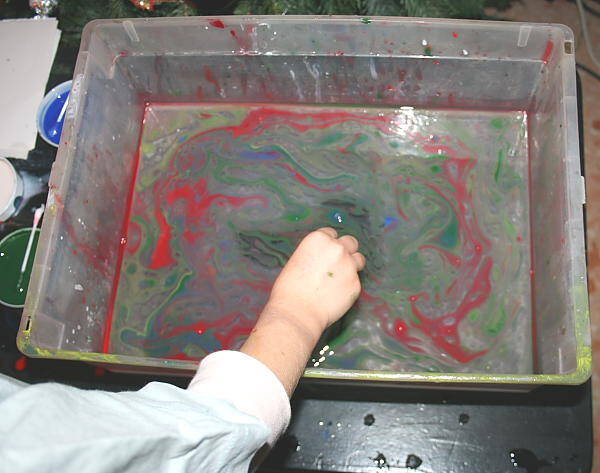
then soak the paper:
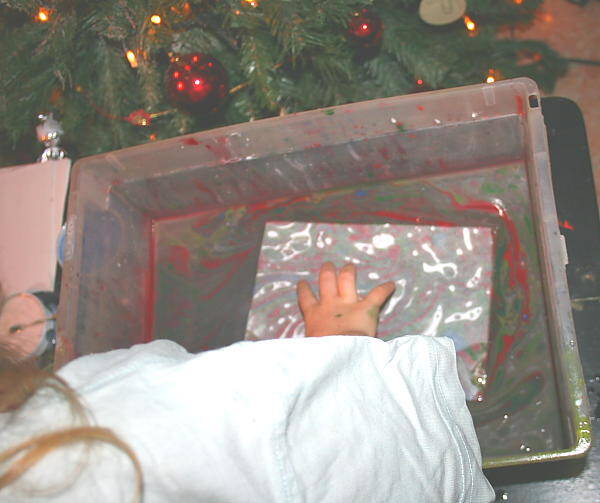
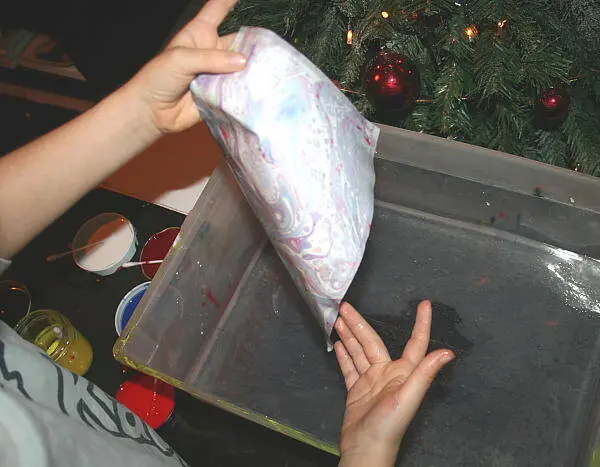
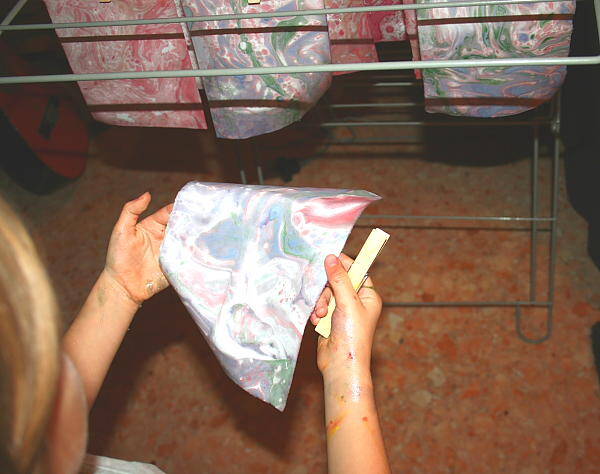
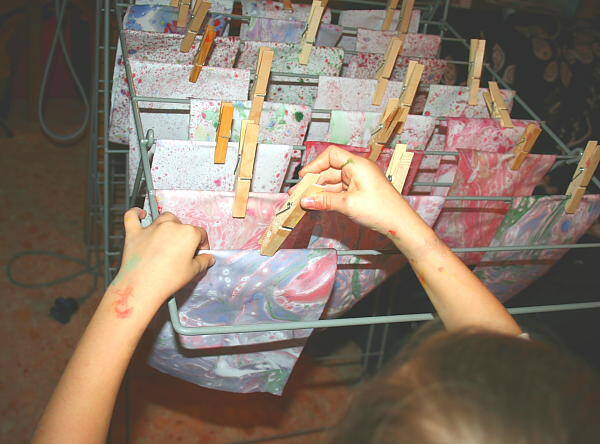
This is the result after dried:
